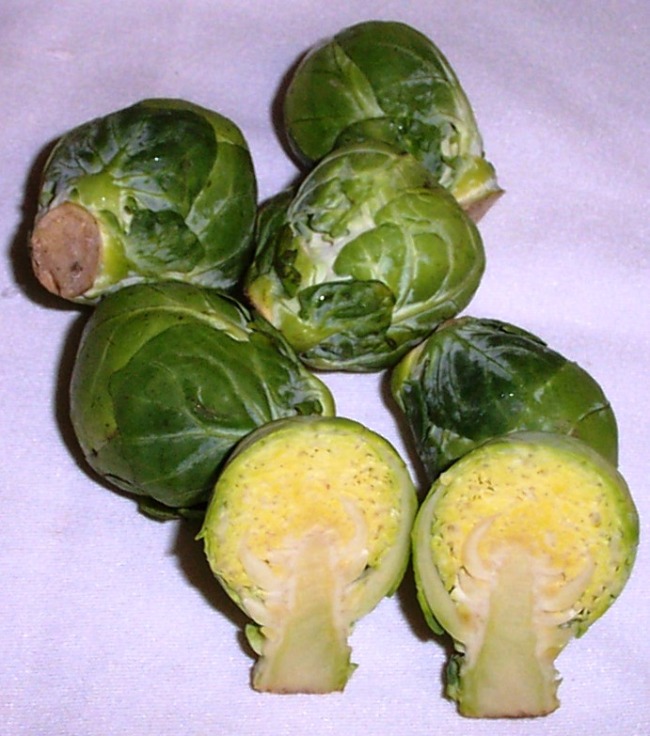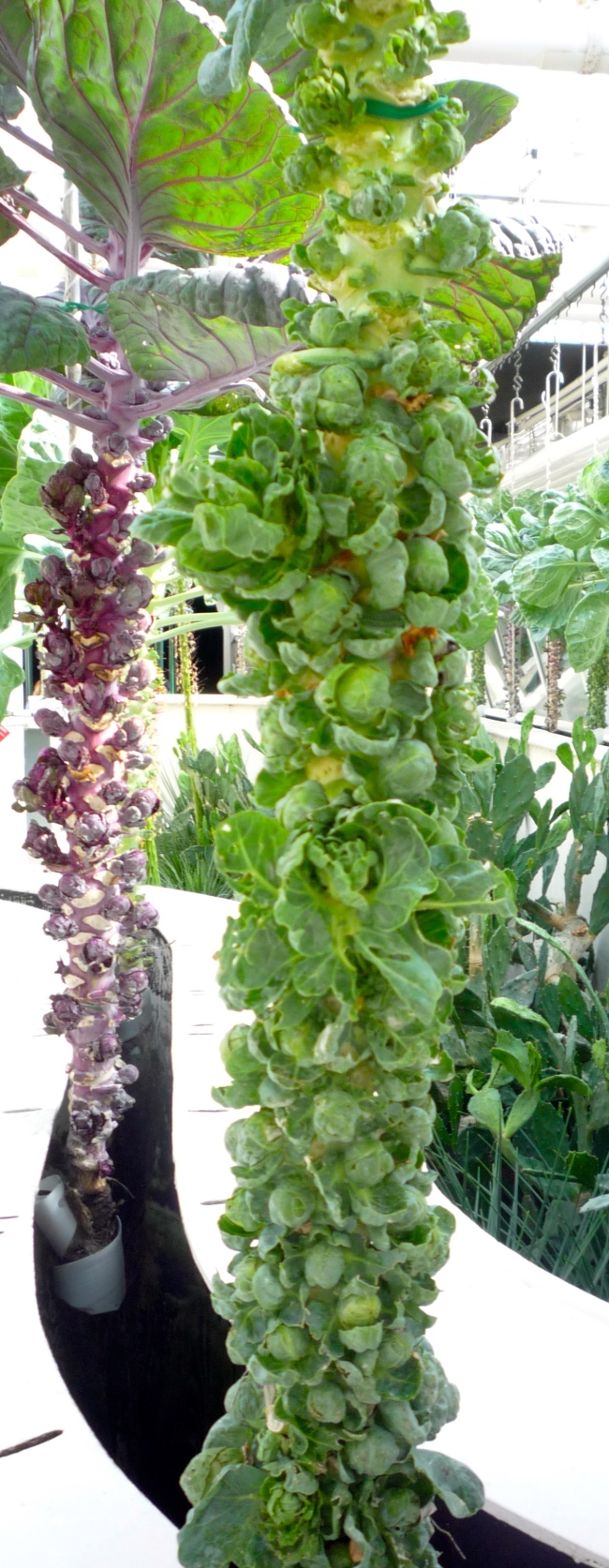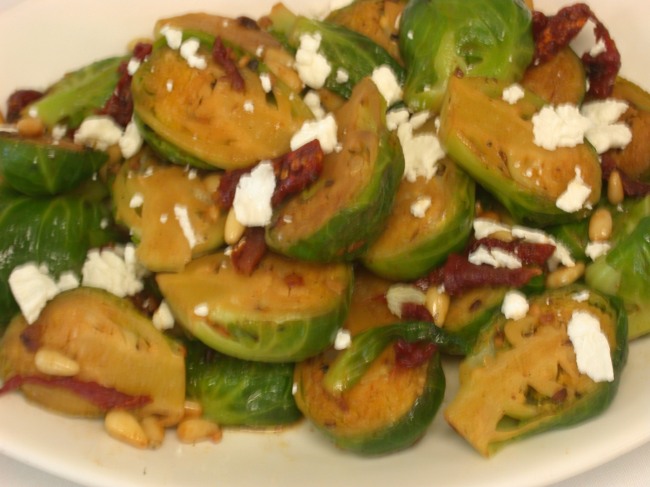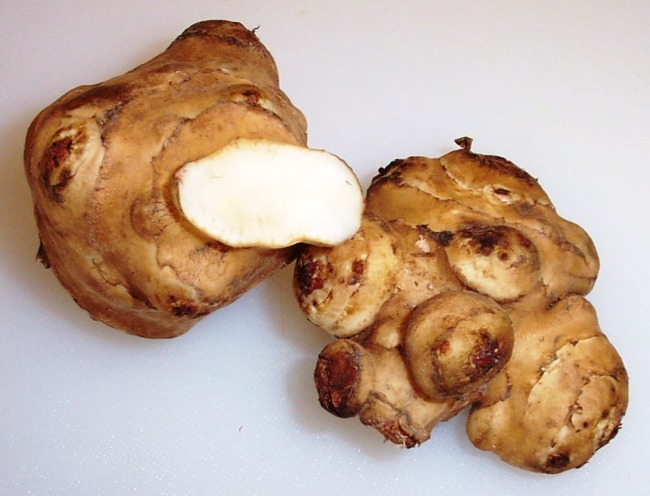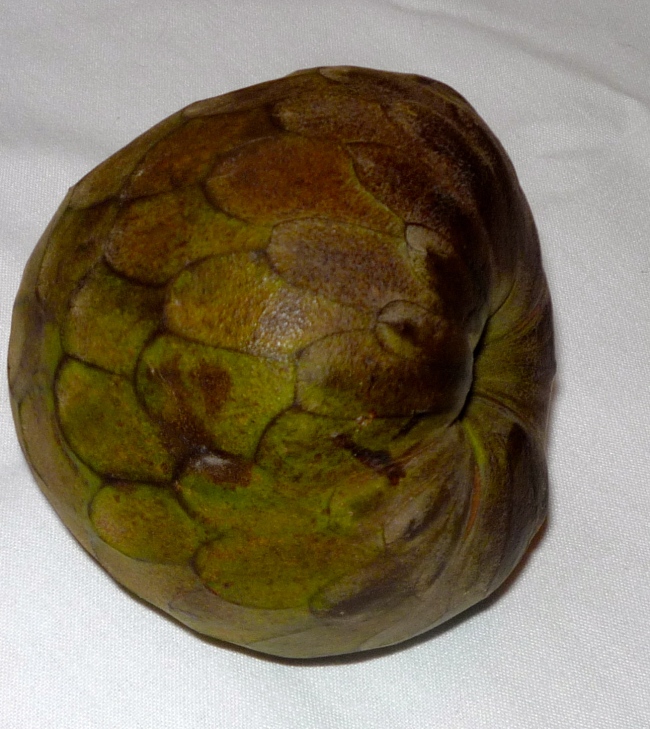The Brussels sprout is a member of the cabbage, or cruciferous family. (Variety gemmifer, species brassica oleracea) It is a bud on a stalk. It looks like a small cabbage head that grows on a thick stalk. The individual leaves can be removed from the head. There are approximately 20 – 40 buds per stalk. The whole stalk looks similar to “bells on a sleigh rein”.
Brussels sprouts contain a chemical called isothiocyanates. (Prevents carcinogens from being absorbed into the body) It causes sulfur compounds to be produced when heated. If the vegetable is overheated, the sulfur will intensify and become more unpleasant.
Brussels sprouts are native to the Mediterranean seaboard, first cultivated around the 5th century. However, they got their name from the town of Brussels, in Belgium, where they were immensely popular.
Brussels sprouts come are in season from late fall and winter, and sometimes last into spring. Fresh Brussels sprouts should be tight and firm. Remove any outer blemished leaves, and trim off any discolored bottoms.
Since they are a member of the cabbage family- they can be eaten raw, however the intensity of the flavor will change with the addition of heat. By placing the sprouts into already boiling salted water (either whole or halved) and cooking until tender, it will help leach out some of the sulfur. The flavor of Brussels sprouts will be greatly improved if by, after blanching, applying high dry heat in order to reduce the sulfur components and increasing their carmelization.
Brussels sprouts contain Vitamin C, B6, and A. They also contain folic acid, potassium, iron, thiamin, magnesium, phosphorus, and niacin.
Brussels Sprouts Flavor Pairings
almonds
anchovies
apples
bacon
bread crumbs
butter
carrots
cheese
chestnuts
cream
duck fat
eggs, hard-boiled
garlic
grapefruit
ham
hollandaise sauce
lemon
mushrooms
mustard
nutmeg
onions
pancetta
parsley
pepper, black
peppers, sweet
pignoli
rosemary
salt
thyme
veal gravy
vinegar
walnuts
Seared Brussels Sprouts with Sun Dried Tomatoes, Pine Nuts, and Feta
SERVES 4 -6 AS A SIDE DISH 30 MINUTES OR LESS
Pick through your Brussels sprouts to make sure they are the same size. Remove any outer leaves that are yellow, or starting to brown. If there are a lot of size differences in the Brussels sprouts, cook in separate batches.
3 cups Brussels sprouts, halved
1/4 cup Pine nuts
2 ea. sun dried tomato halves, preferably marinated in oil, sliced into thin strips
2 Tbs. butter
1/4 cup crumbled Feta cheese
2 cloves of garlic, minced
Eden Sea Salt to taste
Freshly ground pepper to taste
- Bring a pot of water to a boil. Add 1 tbsp. of Eden Sea Salt. Submerge the halved Brussels sprouts into the water, and partially cook 2 minutes. The Brussels sprouts should be bright green, and slightly tender.
- Remove the Brussels sprouts from water and submerge into ice water (to stop cooking process). Remove and set aside.
- Heat a large sauté pan over medium heat. Place the pine nuts in the pan. Stirring constantly, toast until light golden brown. Remove from pan, and set aside.
- In the same sauté pan, heat 2 Tbs. butter over medium high heat. Add the Brussels sprouts, and season with Eden Sea Salt to taste and freshly ground pepper to taste.
- Sauté until slightly brown and a slightly crispy.
- Add sun-dried tomatoes and garlic and continue to cook for another 1-2 minutes. Do not allow garlic to brown. It should be fragrant.
- Remove pan from heat.
- Stir in crumbled feta cheese. Adjust seasonings with Eden Sea Salt to taste and freshly ground pepper to taste.
- Serve immediately.
Notes: *Pine nuts can be eliminated, if necessary due to allergies.
* To make vegan, omit the feta cheese, or use soy “cheese”, and substitute Eden Selected Spanish Extra Virgin olive oil for the butter.
PER SERVING: 330.5 CAL; 14.4G PROT; 21.55G TOTAL FAT (9.33G SAT. FAT); 27.5 CARB; 40.53MG CHOL; 542/5MG SODIUM; 11.25G FIBER.
Originally Submitted to Vegetarian Times- Cutting Edge Cuisine for the November/ December 2004 edition by Chef Jennifer Carson (Denlinger) and her students of Orlando Culinary Academy.
Originally Published 11-6-13
© 2013 Chef Jennifer M. Denlinger All rights reserved
Please contact me for permission to use or reference this work.
Please contact me if you wish to receive “Food For Thought” in your mailbox.
